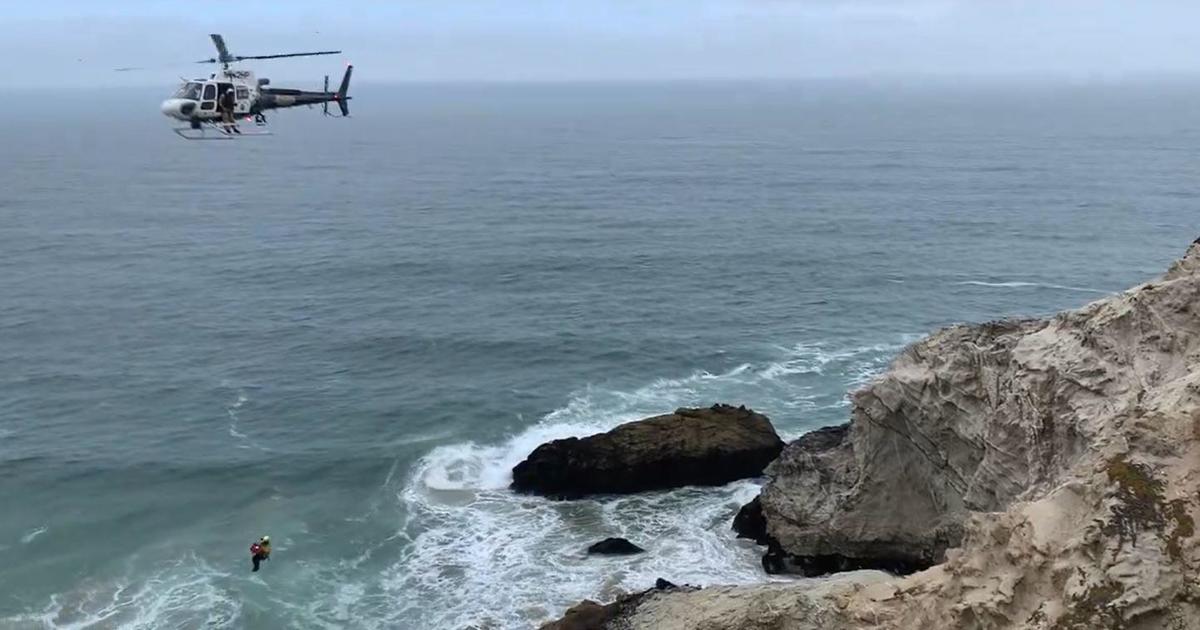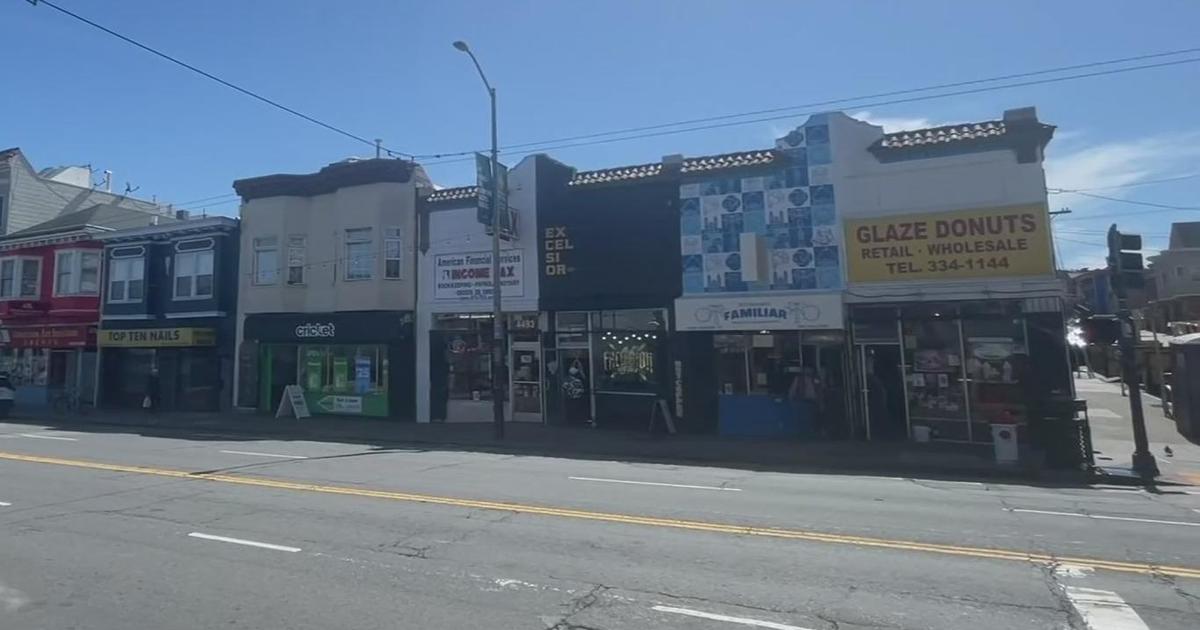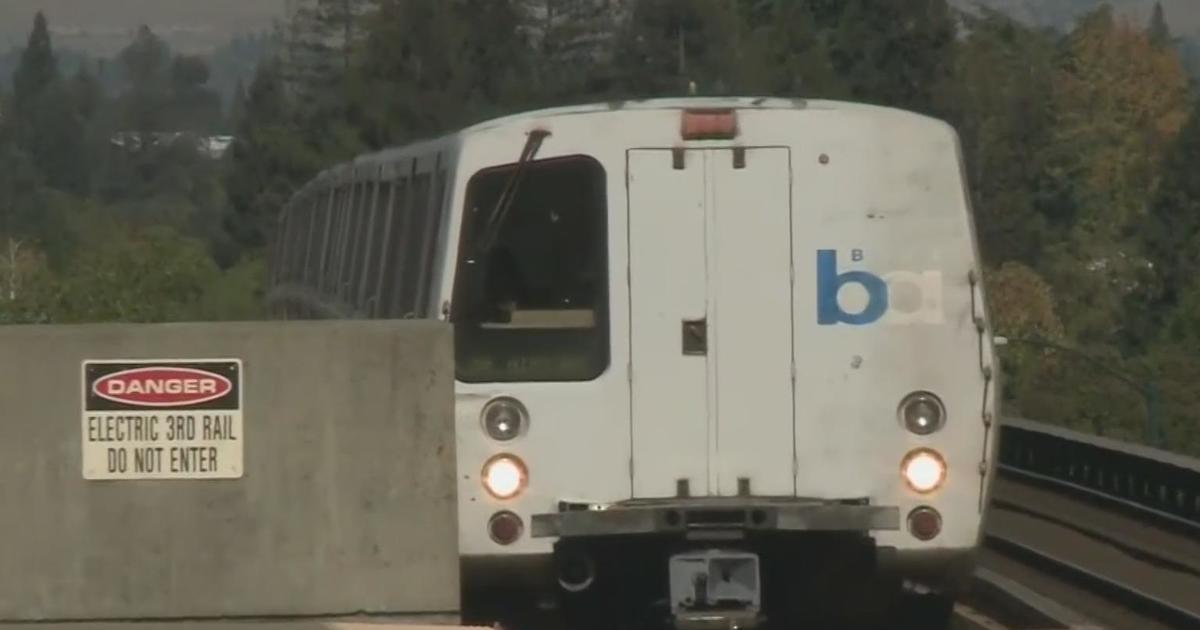Corporate Sand Mining In SF Bay Sparks 'Sand Wars'
SAN FRANCISCO (KPIX 5) -- There's a battle being fought in the bay that's hidden from view. That's because the battle lines are drawn deep underwater.
One wouldn't know it just by walking along the seashore, but the beaches of the world are shrinking and slowly dying. One reason is that the sea level is rising. But another reason is that sand is one the main ingredients in concrete, the most widely used construction material in the world.
As it runs scarcer, there's a rush to mine it--a sand rush that's playing out right in the San Francisco Bay.
Recently, KPIX 5 was out on the water with Sejal Choksi-Chugh, San Francisco Baykeeper's executive director, on the hunt for a very unique-looking barge.
The barge is not dredging; it's actually mining sand from the bottom of the bay. The company that owns it, Hanson Marine Operations, sells the sand for profit.
"This sand belongs to the people of the Bay Area," said Choksi-Chugh.
It was the Baykeeper that first discovered the mining operation six years ago. At the time, the State Lands Commission, which owns the sand in the public trust, had just approved the company's request to more than double the amount of sand it could mine.
"We started to dig a little bit and realized there was science coming out at the very same time that was showing that the same sand that was being taken out of the bay was the sand that was supposed to reach our coastal shoreline," said Choksi-Chugh.
Hydrological maps show that sand from the bay floor drifts out from under the Golden Gate Bridge and gets deposited on what's known as the San Francisco Bar, and more specifically, Ocean Beach.
Baykeeper scientists concluded that there was a connection between the increased mining and increased erosion at the beach.
"We were really asking the State Lands Commission to pay more attention to what was happening. But instead of doing that, they kind of dug their heels in. The agency just said, 'No, this isn't a problem, we have the ability to designate this for sale if we want to,'" said Choksi Chugh.
The Baykeeper sued the State Lands Commission and the sand mining company Hanson Marine Operations. It took six years of legal battles. In November, an appeals court judge sided with the State Lands Commission and the sand mining company.
"I want to be really clear about this. There is nothing in those studies that says that there is a direct causal link between sediment removal in the bay and erosion at Ocean Beach which is occurring for a whole multitude of factors," said Hanson Marine Operation's attorney, Christian Marsh.
The justices ruled the sand mining increase is allowed. It's a setback for the San Francisco Baykeeper.
"It's 1.5 million cubic yards of sand, which doesn't mean much to many people. But that means it's 4 times the amount of sand that will actually enter San Francisco Bay from upstream forces," said SF Baykeeper's attorney Erica Maharg.
"It's sort of like a bank account, there's stuff going in and stuff going out, we know what happens when more is coming out than is coming in," said UC Santa Cruz Professor Gary Griggs.
Professor Griggs is one of the world's top experts on sand. He's collected samples from all over the world.
"In California we have something like a $45 billion dollar a year coastal ocean economy and 90% of that is tourism and recreation, and ports and harbors. If the beaches disappear or are half as wide, we are suffering," said Professor Griggs.
Griggs led the fight to shut down the only other sand mining operation on the west coast near Monterey that was found to be causing massive erosion.
"Under a recently reached agreement, the mine, owned by the multinational corporation Cemex, will stop operations permanently in 2020."
Professor Griggs says the international rush to mine sand, as featured in the documentary "Sand Wars", has created sand mafias that are literally stealing it off beaches, a trend Griggs says is now backfiring.
"They are building hotels there and there is no beach to come to enjoy. I guess that's called shooting yourself in the foot," said Professor Griggs.
A lot of money is at stake. The State Lands Commission collected $1.3 million in royalties last year from the sand mining operation.
"The private companies are selling that sand, selling that public resource that belongs to all of us to make a profit," said Choksi-Chugh.
Attorneys for the State Lands Commission and the mining company didn't respond to inquiries.
Hanson Marine Operation's' parent company Lehigh Hanson later sent KPIX 5 a statement saying the sand it mines "plays an important role in building and maintaining critical infrastructures in the Bay Area."
So, until its lease comes up for renewal in five years, it's going to be business as usual.
Desert sand, which is very plentiful on the planet, is too fine for use in construction. To make concrete, you need alluvial sand found in rivers and in seas and oceans. That is what is in limited supply around the world.
Lehigh Hanson, Inc. Statement on the California Court of Appeal's Decision Regarding San Francisco Baykeeper, Inc. vs. California State Lands Commission:
"On October 31, 2018, the California Court of Appeal issued its ruling regarding the second appeal in the matter of San Francisco Baykeeper, Inc. v. California State Lands Commission (SLC).
We are pleased that the court again concluded that the sand mining operation of our subsidiary, Hanson Marine Operations, Inc., has minimal environmental impact on sediment supplies and coastal erosion, and also determined that substantial evidence supports the SLC's findings that the project will not impair public trust uses or values.
The sand that Lehigh Hanson mines from the San Francisco Bay plays an important role in building and maintaining critical infrastructure in the Bay Area and is also used in a broad range of public and private construction projects.
Bay sands have been used for nearby public infrastructure such as bridges, port projects, roadways, hospitals and schools, as well as for beach replenishment and habitat restoration projects.
Using local sand from the Bay is a more sustainable and cost-effective alternative to using material from other sources because it alleviates truck trips on Bay Area roads and substantially reduces air and greenhouse gas emissions.
While Baykeeper asserts that sand mining is causing coastal erosion, the SLC, the trial court, and now the appeals court have each twice rejected this assertion.
'We are pleased by the California Court of Appeal's decision in this matter,' said Daniel Fritz, President of Lehigh Hanson's West Region. 'We have continued to maintain that using a local source for this important construction material is both economically and environmentally sound and it is gratifying that the court has again confirmed this belief.'"
To learn more about sand mining and its impacts on the environment, please take a look at some excerpts from KPIX 5's interview with Professor Griggs below:




